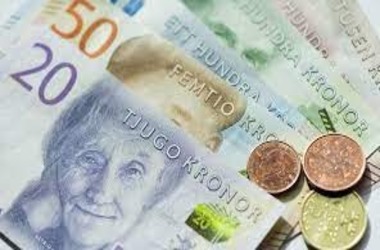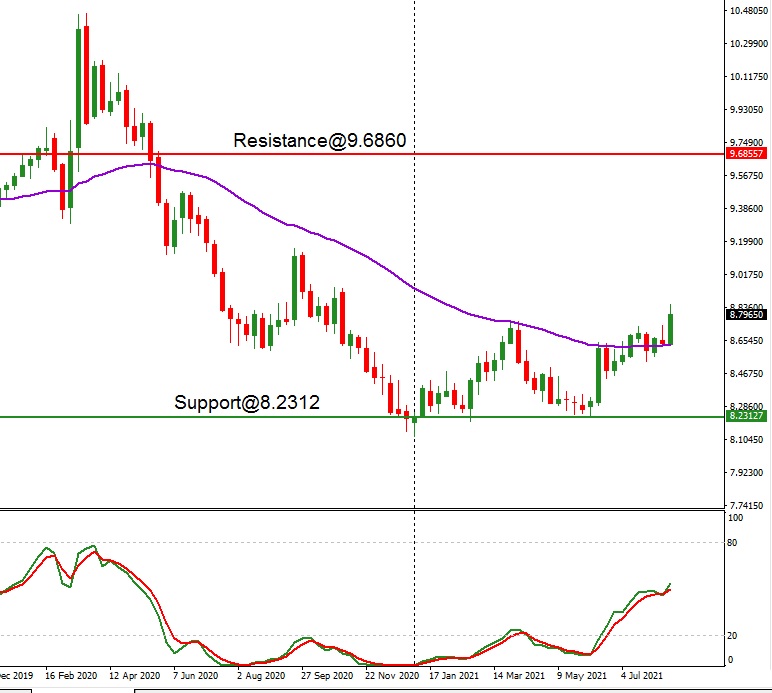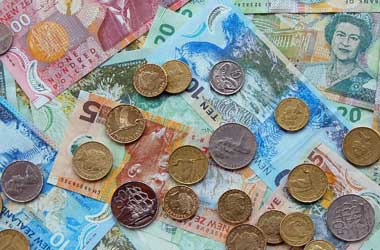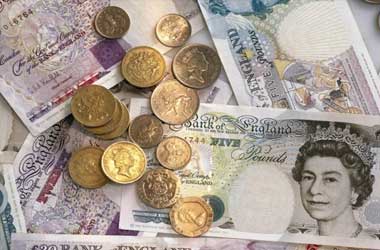 The Swedish krona hit a one-and-a-half-year low despite the release of a series of upbeat data for July. Specifically, the country’s industry confidence has hit a record high in July as manufacturer’s sentiment made a new historical high. The second-quarter GDP growth also surpassed economists’ expectations. However, the market is focused on policy tightening by the US Fed Reserve. The minutes of the July meeting indicates that tapering will begin in the months ahead, most certainly before the end of 2021.Currently, the Fed has been purchasing $120 billion worth bonds per month to keep the interest rates low and boost economic activity.
The Swedish krona hit a one-and-a-half-year low despite the release of a series of upbeat data for July. Specifically, the country’s industry confidence has hit a record high in July as manufacturer’s sentiment made a new historical high. The second-quarter GDP growth also surpassed economists’ expectations. However, the market is focused on policy tightening by the US Fed Reserve. The minutes of the July meeting indicates that tapering will begin in the months ahead, most certainly before the end of 2021.Currently, the Fed has been purchasing $120 billion worth bonds per month to keep the interest rates low and boost economic activity.
Swedish industries ran at 91.30% of their installed capacity in the June quarter, the highest level since 3Q19, and compared with an upwardly amended 89.70% in the earlier period. Manufacturing sector’s capacity utilization index rose to 91.20 in the second-quarter, from 88.50 in the first-quarter, but declined to 92.50, from 98.70 in mining sector. During the same period last year, capacity utilization was only 82.30%.
The Services PMI of Sweden rose to 69.10 in July, from 67.90 in the prior month, reflecting the second highest reading on record, against the backdrop of relaxation in Covid-19 prohibitions. Three out of four sub-indexes recorded growth. While fresh orders index increased 2.80 points to 70.70, employment index rose by 3.30 points to 57.70.
Delivery times fell and corresponding index declined 3.60 points to 75.80. In the meanwhile, the index representing suppliers’ input goods prices stood at record high levels and indicates that increasing input goods prices are broadly spread in the service sector, although the index declined to 81.20, from 82.20.
Data published by the Swedbank indicated that the country’s manufacturing PMI edged downwards to 65.30 in July, from 65.40 in June, reflecting the slowest pace of growth in factory activity in four months. Even though the industry points to a robust economic activity, the drop in PMI signals that the growth rate in the industry will ease in the future.
While fresh export orders dropped 1.50 points to 61.20, new orders index inched higher by 0.1 point to 65.70. Production increased 1.40 points to 63.10. Delivery times rose by 0.60 points to 84.60. Employment increased 1.30 points to 61.70.
Sweden’s consumer confidence index inched downwards to 106.50 in July, from downwardly amended 109.30 in June, the lowest reading in three months.
Sweden’s total industry confidence index surged to 122.90 in July, from upwardly amended 118.90 in June. The reported reading is the highest ever, as manufacturers’ sentiment rose to a historical high of 129.20 in July, from 125.10 in June.
Opinion of firms regarding their prevailing order books also paved way for the increase but anticipations for production volumes were not as optimistic as in June. Traders’ sentiment improved to 123.50, from 118.10. Likewise, service providers’ sentiment increased to 115.70 from 112.80. Constructors’ sentiment inched upwards to 105.80, from 104.50.
The country’s GDP grew 0.90% q-o-q in the quarter ended June 2021, an increase from a 0.80% increase in the earlier period and surpassed market anticipations for a 0.70% rise. The Swedish Statistics agency stated that the economy continued to expand in the second-quarter, in accordance with the prior estimates. On y-o-y basis, output jumped by 10%, after remaining flat in the earlier quarter.

Industrial inventories in Sweden fell by SEK 6.16 billion in 2Q21, following a SEK 1.52 billion increase in the March 2021 quarter. Inventories at manufacturers declined SEK 5.61 billion in the June quarter, following a SEK 0.78 billion rise in the March quarter, and inventories at miners fell SEK 0.56 billion, following a 0.73 billion increase in the previous period.
Notably, in the USD/SEK price chart, the USD/SEK pair has formed a double bottom pattern, implying that the pair will continue with the uptrend in the weeks ahead.




